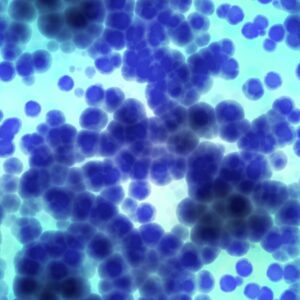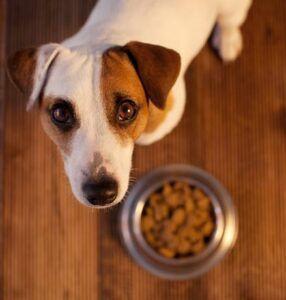Our current research in immune diseases, infectious diseases and antimicrobial resistance
Explore more PetSavers-funded research in other disease areas
 |
Surveillance of antimicrobial resistance in clinical infections from companion animalsStudent Research Project: £2,400 awarded in 2025 Institution: University of Liverpool Lead researcher: Dorina Timofte Student: Olivia Freeman Aim: To generate novel standardised antimicrobial susceptibility testing data from bacterial isolates and compare these with original laboratory data, with a view to harmonising data from companion animal AMR surveillance.
|
 |
Determining the presence of Gram-negative ESKAPE organisms and antimicrobial-resistant Escherichia coli in commercially available alternative diets for dogs and catsMaster’s Degree by Research: £41,730 awarded in 2025 Institution: University of Liverpool Lead researcher: Genever Morgan Student: Sophie Haslam These bacteria have the potential to cause serious, difficult-to-treat infections, posing a risk to animals and humans. Aim: This study will add to the evidence about the microbiological risks of certain pet diets, providing valuable information for veterinary professionals and pet owners.
|
 |
Analysis of morphological and inflammation-related phenotypic changes in peripheral blood mononuclear cells of dogs with immune mediated haemolytic anaemia and their correlation to therapeutic success and outcomeClinical Research Project Grant: £19,321 awarded in 2024 Institution: University of Edinburgh Lead researcher: Alisdair Boag This serious autoimmune condition destroys red blood cells. While steroids are typically used in treatment, not all dogs respond, and some may need additional medications. Aim: This study aims to examine changes in monocytes before and after steroid treatment, comparing them to healthy dogs, to better identify which patients might benefit from alternative therapies. |
|
|
Reusable vs disposable drapes: does their use affect post-operative wound complication rates in routine surgeries?Clinical Research Project Grant: £9,053 awarded in 2022 Institution: Vet Partners, York Lead researcher: Hannah James The use of reusable surgical drapes instead of disposables is frequently recommended to reduce waste volumes and environmental impacts in veterinary practice. The choice of doing so for veterinary practices may depend on factors including cost, convenience and practitioner preference, with both types of drape in common usage. There is no clear evidence as to whether either is preferable in terms of post-operative infections or other wound complications. Aim: This study hopes to identify whether there are measurable differences in wound healing attributable to the choice of drape, to enable practitioners to factor this into their choice. An article about the study was published in BSAVA’s Companion magazine. The study protocol was published open access in BMC Veterinary Research. |
|
|
The susceptibility of Staphylococcus pseudintermedius to fluoroquinolones and their suitability for treating infections with methicillin resistant Staphylococcus pseudintermedius (MRSP): a pilot studyClinical Research Project Grant: £5818.71 awarded in 2021 Institution: University of Liverpool Lead researcher: Nicola Williams Staphylococcus pseudintermedius is the main coagulase-positive, Gram-positive mucosal commensal bacteria in dogs. Methicillin-resistant S. pseudintermedius (MRSP) carries the mecA gene, and such bacteria are often also multidrug resistant. Treatment of MRSP infections is challenging due to a lack of treatment options, and inappropriate therapy may result in treatment failure and poor welfare. Aim: This study aims to investigate the susceptibility of a cross section of S. pseudintermedius to fluoroquinolones and to assess whether exposure of these bacteria to the drugs may select for resistance. These data will further inform both whether these drugs are likely to be effective and appropriate for treating such infections. |
Our past research in immune diseases, infectious diseases and antimicrobial resistance
 |
Comparison of serum procalcitonin and serum amyloid A (SAA) concentrations as a marker of bacterial causes of systemic inflammatory response syndrome (SIRS) in catsStudent Research Project Grant: £3200 awarded in 2023 Institution: University of Cambridge Lead researcher: Tim Williams Student: Tarn Chamberlain James Serum procalcitonin (PCT) concentrations are higher in cats with bacterial causes of sepsis (systemic inflammatory response syndrome, SIRS) than in those with other causes. This undergraduate project explored the prognostic value of PCT in cats with bacterial SIRS and its correlation with serum amyloid A (SAA) concentrations, which is another biomarker of systemic inflammation. Serum SAA concentrations were significantly higher in SIRS cats with an infectious versus non-infectious aetiology (P=0.02), but there was no significant difference in PCT concentrations between the two groups. Take home message: Serum SAA could be a useful biomarker for differentiating infectious from non-infectious causes of SIRS in cats. An article about the study was published in BSAVA’s Companion magazine. Tarn also presented the findings as an abstract at BSAVA Congress 2025, which can be read here. A recording is freely available (starting at the beginning of the session). |
|
|
Acute phase protein and micro RNA signatures for the diagnosis and prognosis of feline infectious peritonitisMaster’s Degree by Research Grant: £39,865 awarded in 2022 Institution: University of Edinburgh Lead researcher: Danielle Gunn-Moore Student: Rachael Hammond Feline infectious peritonitis (FIP) results in inflammation of the blood vessels throughout the body, and affects 5-10% of pet cats. Its cause is poorly understood, it is difficult to diagnose and until recently it responded poorly to all treatments. This master’s degree aimed to investigate the role of acute phase protein profiles in FPP and explore the potential of micro-RNA signatures in diagnosis. An article about the study was published in BSAVA’s Companion magazine. |
|
|
Evaluation of antimicrobial activity of canine urinary extracellular vesicles against causative agents of canine otitis externa (Pseudomonas aeruginosa and Staphylococcus intermedius)Student Research Project Grant: £3180 awarded in 2023 Institution: University of Cambridge Lead researcher: Tim Williams Student: Nina Wittmann Bacterial species that cause canine otitis externa are becoming increasingly antibiotic resistant. Take home message: This undergraduate project demonstrated the significant antimicrobial activity of canine urinary extracellular vesicle preparations against P. aeruginosa and S. intermedius, suggesting they could provide a novel topical therapeutic against these species. Nina presented these findings as an abstract at BSAVA Congress 2024. |
|
|
Comparing the early viral entry process in avirulent and virulent calicivirusesStudent Research Project Grant: £2600 awarded in 2023 Institution: University of Glasgow Lead researcher: Margaret Hosie Student: Sora Ogawa Caliciviruses cause diseases of global importance to human and veterinary medicine. Although vaccines are available for feline calcivirus, virulent strains have emerged that can cause severe disease. Take home message: This undergraduate study used cryo-electron microscopy to obtain a high-resolution structure of respiratory feline calicivirus strain FCV 273 to a resolution of 2.7-Å, revealing stable P2 domains and laying the foundations for effective vaccine development. Sora presented her findings as an abstract at BSAVA Congress 2024. |
|
|
Investigating the potential of phage therapy to tackle Pseudomonas aeruginosa infections in dogsMaster’s Degree by Research Grant: £9,053 awarded in 2022 Institution: University of Edinburgh Lead researcher: Gavin Paterson Student: Shannon Street Pseudomonas aeruginosa is an important cause of chronic otitis in canine veterinary practice and infections are often very difficult to treat due to antimicrobial resistance. Phage therapy, using bacterial viruses to kill pathogenic bacteria, is a possible therapeutic approach. This master’s degree isolated five novel lytic phages with potential as phage therapy candidates from wastewater samples. These were characterised by imaging, genome sequencing and the testing of their phage killing capabilities. Take home message: The novel phages showed activity against canine otitis isolates of P. aeruginosa, although their host ranges were somewhat limited. However, these could be improved by phage training or they could be used in conjunction with other phages, thus offering potential for new treatments against pathogenic bacteria. An article about the study was published in BSAVA’s Companion magazine. |
|
|
Characterising the virus neutralising antibody response to SARS-CoV-2 in the UK feline population and examining changes in seroprevalence during the different phases of the pandemicStudent Research Project Grant: £2771 awarded in 2022 Institution: University of Glasgow Lead researcher: Margaret Hosie Student: Chloe Montreuil-Spencer This undergraduate project assessed the ability of sera from domestic cats to neutralise four SARS-CoV-2 pseudotypes (B.1, Alpha, Delta, and Omicron (BA.1)) to characterize feline virus neutralising antibody responses in the UK. Pseudotype-based neutralisation assays were performed on residual serum samples collected from 806 domestic cats and seropositivity was confirmed using a double antigen bridging immunoassay. In Spring-Summer 2022, feline anti-SARS-CoV-2 seroprevalence was shown to decline to 4%. Neutralising antibody titres were highest against B.1 and Delta pseudotypes and lowest against Omicron. Seropositive cats developed a neutralising antibody titre against one or more SARS-CoV-2 variants, but the degree of cross-neutralisation varied between individuals. Likelihood of seropositivity was not associated with sex, age, or pedigree of cats. The recent decline in neutralising antibody titres and the significantly weaker response against Omicron suggest that previously infected cats may be vulnerable to reinfection when exposed to newer SARS-CoV-2 variants. Take home message: Adopting a One-Health strategy that involves monitoring both humans and their pets could be pivotal in helping control the COVID-19 pandemic, particularly recognising concerns about infections spilling back to humans. Findings were presented as an abstract at BSAVA Congress 2023, which can be freely accessed here. An article about the study was published in BSAVA’s Companion magazine. Chloe also presented these findings as an abstract at BSAVA Congress 2023, which can be read here. A recording is freely available (skip to 0:12:54). |
|
|
What is the role of urinary extracellular vesicles in the pathogenesis of canine urinary tract infection and asymptomatic bacteriuria?Student Research Project Grant: £2500 awarded in 2021 Institution: University of Cambridge Lead researcher: Tim Williams Student: Nicole Cardoza Urine infections are relatively common in dogs, but the cause of these infections is often unclear. This undergraduate project investigated the bactericidal properties of urinary extracellular vesicles (UEVs) in dogs with and without bacteriuria. Take home message: Canine UEV preparations demonstrated antimicrobial activity at physiologically relevant concentrations, although the potency of UEV antimicrobial activity was variable between individuals. An article about the study was published in BSAVA’s Companion magazine. Nicole also presented these findings as an abstract at BSAVA Congress 2023, which can be read here. A recording is freely available (from the beginning of the session). |
|
|
Cotton wool versus non-woven gauze swabs: comparatively which is more efficacious for minimising the preoperative microbial load on the ovariohysterectomy surgical site in bitches?Student Research Project Grant: £2050 awarded in 2021 Institution: Harper Adams University Lead researcher: Kat Holt Student: Becky Verhoven Surgical site infections are a common complication of veterinary surgeries, and are mainly caused by commensal bacteria such as Staphylococcus pseudintermedius. The antiseptic agent and application technique have been recognised and researched as two key components of surgical skin preparation, but less is known about the material utilised to apply the antiseptic solution. This undergraduate project investigated the clinical efficacy of cotton wool versus non-woven gauze swabs for reducing microbial contamination of the ovariohysterectomy surgical site in bitches pre-operatively. The skin microbiome on the bitch ovariohysterectomy surgical site in dogs (n=24) undergoing ovariohysterectomy was sampled pre- and post-antisepsis following randomisation to an antisepsis protocol of 4% chlorhexidine gluconate and either cotton wool (n=12) or non-woven gauze swabs (n=12). Take home message: There was no significant difference between cotton wool and non-woven gauze for microbial reduction nor for post-operative licking of the surgical site, indicating that both materials are equally efficacious. An article about the study was published in BSAVA’s Companion magazine. Becky also presented these findings as an abstract at BSAVA Congress 2022, which can be read here. A recording is freely available (skip to 0:17:04). |
|
|
Pathogens and antimicrobial resistance in raw meat diets for dogsStudent Research Project Grant: £2500 awarded in 2020 Institution: University of Liverpool Lead researcher: Gina Pinchbeck Student: Eda Taymaz Raw meat and bone (RMB) diets for dogs are increasing in popularity in the UK. Previous studies have shown that they can be contaminated with E. coli and Salmonella species of bacteria, and that feeding these diets is a risk factor for the detection of canine faecal antimicrobial-resistant (AMR) bacteria. This undergraduate study determined the types and sources of RMB diets being fed to dogs, the prevalence of E. coli and Salmonella present, and the types of plasmids and associated resistance genes present on them in this food. A total of 190 faecal samples were collected from dogs from 140 households (114 samples from raw-fed dogs and 76 from non-raw-fed dogs). Salmonella species were detected in four percent of the samples (all raw-fed) and AMR E. coli was detected in 62 percent of raw-fed dogs with only 13 percent of non-raw-fed dogs. Take home message: Statistical analysis confirmed that dogs fed raw food diets had 7.5 times the odds of having MDR (multi-drug resistant), more than 14.5 times the odds of having 3GCR (third generation cephalosporin-resistant), and more than 6 times the odds of having AMR (resistance to at least one tested antimicrobial) E. coli in their faeces than dogs fed non-raw diets. Eda presented these findings as an abstract at BSAVA Congress 2022, which can be read here. A recording is freely available (skip to 0:50:40). |
|
|
Can we use bacterial outer membrane vesicles as a novel anti-bacterial therapy?Student Research Project Grant: £2500 awarded in 2020 Institution: University of Cambridge Lead researcher: Tim Williams Student: Josh Oliver Outer membrane vesicles from a variety of bacterial strains, including E. coli, have bacteriolytic effects against other bacteria including P. aeruginosa which is a common bacterial isolate in canine otitis externa. The treatment of P. aeruginosa otitis is challenging because many strains are resistant to numerous antimicrobials. Take home message: This undergraduate project found that bacterial outer membrane vesicles derived from BL21 strains of E. coli were not universally bactericidal, although there was some evidence of bactericidal activity against one isolate of P. aeruginosa. |











